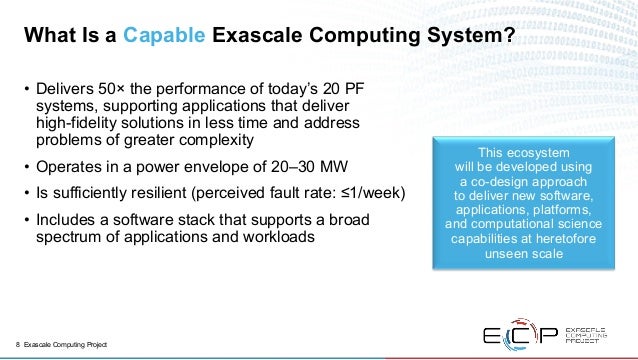|
 The U.S. Department of Energy’s Ames Laboratory is launching a four-year, $3.2 million project to develop software that will bring the power of exascale computers to the computational study and design of catalytic materials. The U.S. Department of Energy’s Ames Laboratory is launching a four-year, $3.2 million project to develop software that will bring the power of exascale computers to the computational study and design of catalytic materials.
|
| Ames Laboratory scientist Mark Gordon, also the Francis M. Craig Distinguished Professor of Chemistry at Iowa State University, will lead the laboratory’s project. Old Dominion University, Georgia Institute of Technology, Virginia Tech, and EP Analytics are named as partner institutions in the effort. |
| The scientific inspiration behind the project, said Gordon, is mesoporous nanoparticles, an area of expertise for the laboratory’s Division Chemical and Biological Sciences. Full of tiny hollow cylinders called pores, they create vast surface area in a small amount of space for active sites to speed the rate of chemical reactions, called catalysis. They are a platform that can be modified for a wide variety of applications such as alternative fuels, biosensing, thermal energy storage, and more. |
| “Understanding these reactions is the key to customizing and expanding their potential applications,” said Gordon. |
| Currently, computational chemistry experts use the fragment molecular orbital method (FMO) a type of problem-solving approach that breaks complex model systems down into smaller and simpler tasks that take less time to compute. But too much simplification in a complex system leads to errors in predicting reaction mechanisms. |
| To solve these shortcomings and to scale software capabilities to the billion billion calculations per second that exascale computing will provide, likely early in the next decade, Ames Laboratory and its partners will improve an existing free-ware program called GAMESS, (General Atomic and Molecular Electronic Structure System). The software was developed by Gordon, members of his research group, and the computational chemistry global research community. |
| “Experimentalists want to understand what is happening in these pores, which are two to four nanometers wide,” said Gordon. “The number of calculations required to predict the molecular dynamics of these reactions expand exponentially with their complexity. Right now, they just aren’t feasible to do. Exascale computing will change all that.” |
| The project is part of a larger, $21.6 million effort funded by the U.S. Department of Energy to develop advanced software for the design of new chemicals and chemical processes for energy production and a range of other potential applications. |
| A key aim of the projects is to take fuller advantage of the nation’s most advanced computers, including so-called “petascale” machines currently deployed at DOE national laboratories—such as Summit at Oak Ridge National Laboratory, recently ranked fastest in the world—and the still faster “exascale” machines expected to be deployed beginning early in the next decade. Petascale machines are capable of at least one quadrillion (1015) calculations per second, while exascale machines, the first scheduled for deployment at Argonne National Laboratory in 2021, will be capable of at least one quintillion (1018) calculations. |

 The U.S. Department of Energy’s Ames Laboratory is launching a four-year, $3.2 million project to develop software that will bring the power of exascale computers to the computational study and design of catalytic materials.
The U.S. Department of Energy’s Ames Laboratory is launching a four-year, $3.2 million project to develop software that will bring the power of exascale computers to the computational study and design of catalytic materials.